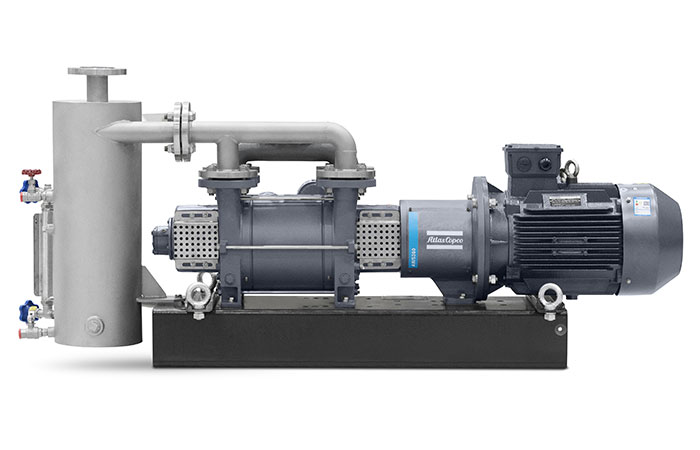
Atlas Copco has launched two new liquid ring vacuum pumps for use in demanding industrial processes. Capable of operating reliably in humid and dusty environments, the sturdy AWS and AWD units are designed to deliver vacuum to a wide range of industries including food and beverage processing, mining and minerals, petrochemicals, steel, cement, plastics, pulp and paper, textiles and pharmaceuticals.
Capacities for liquid ring pumps typically range from 170 to 37,500 m³/h. Lower capacity units below 5500 m³/h are available as single-stage AWS models or two-stage AWD models pre-configured with direct-drive options in 50 and 60 Hz speeds. For larger installations, high capacity AWL pumps with belt or gearbox transmission are available.
Single stage AWS pumps offer outstanding efficiency above 200 mbar (absolute), making them ideal for general process applications such as filtration and dewatering, and pump down or evacuation duties.
Meanwhile, the two-stage AWD pumps provide continuous high performance at operating pressures below 200 mbar (absolute). Two synchronised pump chambers work in series to achieve high performance and improved efficiency on continuous process duties such as drying, degassing exhausting and solvent recovery.
All AWS and AWD pumps can achieve ultimate pressure levels as low as 30 mbar (absolute). They are available in three pre-engineered modular configurations designed for once-through, partial recirculation or total recovery of service water. In most cases all wetted system components are manufactured from stainless steel.
The once-through pump is the module with the simplest design. It consists of a pump with an electric motor, drive system and skid. It is ideal for installations with an adequate supply of site water, which can then be continuously drained from the pump for re-use. The pumping system adds no contaminates to the service water other than those coming from the process.
In the case of partial recovery, the discharge liquid-process gas mixture is collected in a vessel where it is mixed with fresh sealing liquid to ensure a constant temperature in the pump. Excess liquid is released from the system via an overflow. Compared with once-through operation, this mode of operation typically saves 50 per cent of the fresh water required.










Water Sector Talent Exodus Could Cripple The Sector
Maybe if things are essential for the running of a country and we want to pay a fair price we should be running these utilities on a not for profit...